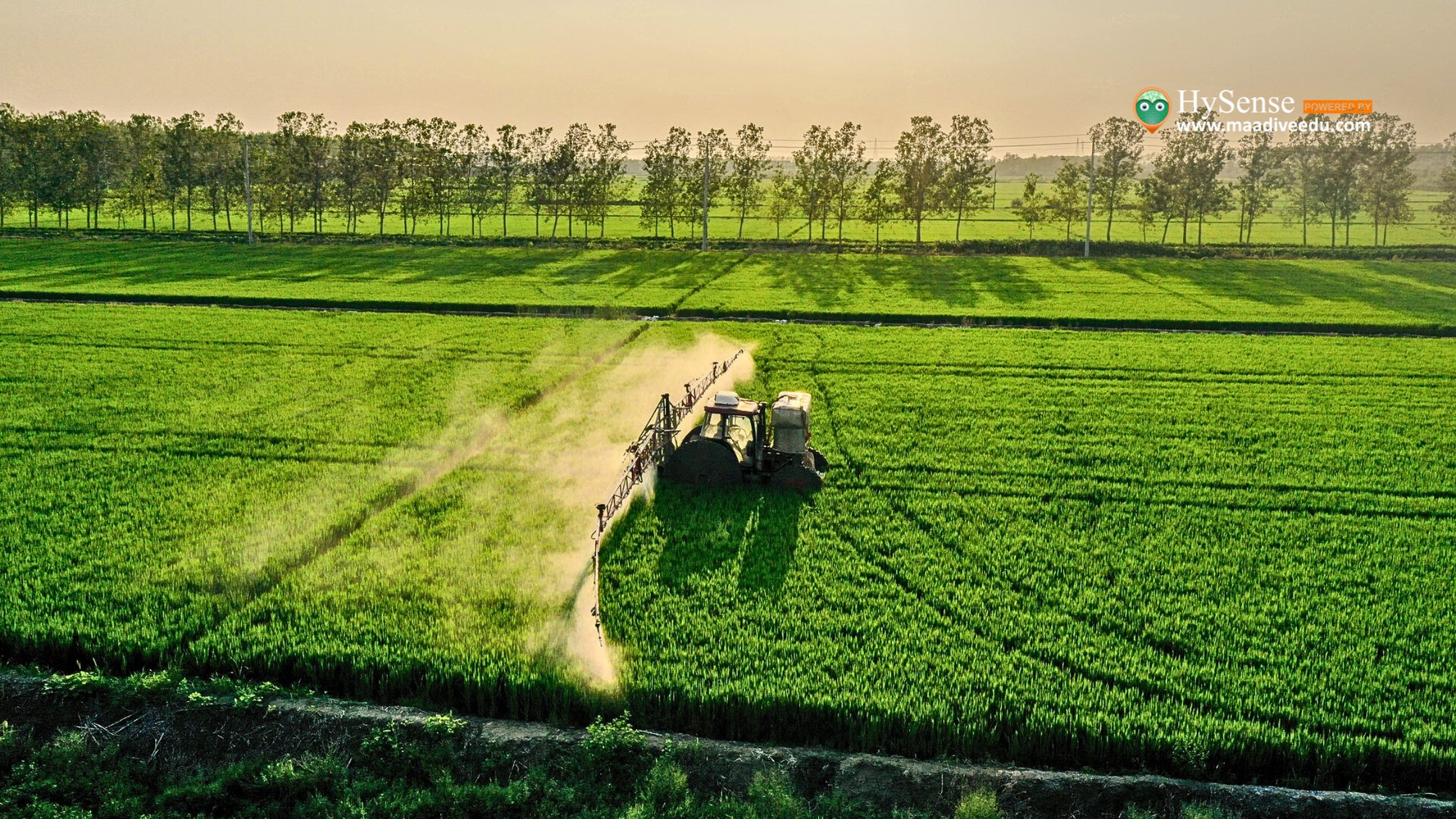Cropland nutrient management : 7 Proven Strategies for Boosting Yields
Boost crop yield and soil health with sustainable farming methods, organic practices, and efficient irrigation techniques for Indian farmers.

Table of Contents
Introduction
In India, agriculture is the backbone of the economy, providing employment to a large portion of the population and playing a critical role in food security. However, with the growing challenges of climate change, water scarcity, and soil degradation, maximizing crop yields has become more difficult. Effective cropland management is essential for sustainable farming and boosting productivity. This blog will explore 7 proven strategies that can help Indian farmers improve soil fertility, increase crop yield, and adopt more sustainable farming practices.
1. Improve Soil Fertility for Better Yields
Why Soil Fertility Matters
Soil is the most important resource for farming, and its health directly impacts crop yield. Soil fertility refers to the soil's ability to provide essential nutrients to plants for healthy growth. In many parts of India, such as Uttar Pradesh, Bihar, and Maharashtra, soil fertility has been declining due to excessive chemical fertilizer use, over-farming, and improper crop management.
How to Enhance Soil Fertility
- Soil Testing: It is crucial for farmers to regularly test their soil to determine its nutrient levels, pH balance, and organic matter content. Based on the test results, targeted fertilizers and amendments can be applied. Soil testing helps to avoid overuse of fertilizers, which can harm the soil in the long run.
- Add Organic Matter: Organic materials such as compost, cow dung, and green manure should be incorporated into the soil. In regions like Punjab, where intensive farming has depleted soil nutrients, organic matter can improve soil structure, increase water retention, and reduce the need for chemical fertilizers.
- Balanced Fertilization: Using a combination of organic and chemical fertilizers based on soil needs can help maintain soil health. For example, states like Tamil Nadu and Karnataka benefit from balanced fertilization strategies, as they face both water stress and nutrient depletion.
2. Adopt Crop Rotation for Sustainable Farming
Benefits of Crop Rotation
Crop rotation involves growing different types of crops in a sequence on the same land to improve soil health and reduce pest buildup. This practice has been used in India for centuries but is often underutilized today. By alternating crops, farmers can:
- Prevent Soil Depletion: Crops such as rice and wheat take up different nutrients from the soil. Rotating them with legumes like peas or beans, which fix nitrogen, helps replenish the soil.
- Reduce Pests and Diseases: Crop rotation disrupts pest cycles and reduces the buildup of soil-borne diseases.
- Increase Soil Fertility: Legumes like pulses (e.g., gram and lentils) enrich the soil with nitrogen, which helps subsequent crops like rice and wheat grow better.
Effective Crop Rotation Strategies in India
- Rice-Wheat-Pulses System: Common in the northern regions like Punjab, Haryana, and Uttar Pradesh, this system alternates between rice, wheat, and legumes like gram or lentils.
- Intercropping with Pulses: In regions like Madhya Pradesh and Chhattisgarh, farmers often intercrop pulses like pigeon peas or soybeans with major crops like maize to improve soil nitrogen levels.
3. Embrace Modern Farming Techniques
How Modern Farming Improves Efficiency
Adopting modern farming methods can significantly enhance farm productivity, reduce costs, and conserve resources. Techniques such as precision farming and sustainable pest control are making a difference in Indian agriculture.
- Precision Agriculture: This technology allows farmers to use GPS and satellite data to manage crops more efficiently. Precision agriculture ensures that water, fertilizers, and pesticides are applied exactly where and when they are needed. In states like Gujarat and Maharashtra, precision agriculture is helping farmers increase yields and minimize resource wastage.
- No-Till Farming: In regions prone to soil erosion like Rajasthan, farmers are adopting no-till or minimal tillage farming. This reduces soil disturbance, prevents erosion, and improves water retention.
- Integrated Pest Management (IPM): This approach combines biological, cultural, and mechanical pest control methods, reducing the need for chemical pesticides. In states like Andhra Pradesh, IPM has been successfully implemented to reduce pesticide use while controlling pests.
4. Promote Crop Diversity to Build Resilience
Why Crop Diversity is Important
Crop diversity is a key strategy for improving farm resilience to pests, diseases, and extreme weather. By growing different types of crops, farmers reduce the risk of total crop failure, which is especially important in a country like India, where monsoons can be unpredictable.
- Reduced Risk of Pest Infestation: By planting a variety of crops, pests are less likely to spread across all crops. This helps in reducing the damage caused by a single pest species.
- Improved Soil Health: Different crops have different root structures and nutrient requirements, which helps improve soil aeration and nutrient cycling.
Examples of Promoting Crop Diversity
- Intercropping: Farmers in Tamil Nadu and Rajasthan practice intercropping, where two or more crops are grown together. For instance, growing cotton alongside groundnut (peanut) helps in reducing pest pressure and maximizing land use.
- Cover Cropping: Growing cover crops during the offseason, such as mustard or chickpea, can prevent soil erosion and improve soil health. In states like Haryana, cover crops are used to protect the soil during dry periods.
5. Utilize Efficient Irrigation Practices
Water Conservation and Irrigation Techniques
India faces significant challenges related to water scarcity, especially in states like Rajasthan, Gujarat, and Tamil Nadu. Efficient irrigation practices are essential for maximizing crop yields while conserving water resources.
- Drip Irrigation: Drip irrigation is highly efficient in delivering water directly to the roots of plants. This method reduces water waste due to evaporation or runoff. It is widely used for crops like sugarcane, cotton, and vegetables in dry regions.
- Sprinkler Systems: Sprinkler irrigation helps provide uniform water distribution across fields, making it suitable for crops like rice, maize, and pulses in areas with inconsistent rainfall.
- Rainwater Harvesting: Collecting and storing rainwater during the monsoon season can be used during dry periods for irrigation. In states like Kerala and Karnataka, farmers are increasingly adopting rainwater harvesting techniques to reduce dependence on groundwater.
Benefits of Efficient Irrigation
- Water Conservation: These methods help reduce water usage, which is especially crucial in water-scarce regions.
- Improved Crop Health: Consistent and efficient irrigation ensures crops receive the right amount of water, which leads to healthier plants and better yields.
6. Practice Organic Farming for Sustainability
Why Organic Farming is Gaining Popularity
Organic farming focuses on maintaining soil health and promoting biodiversity without relying on synthetic chemicals. This method is increasingly gaining popularity in India due to its long-term sustainability and environmental benefits.
- Natural Fertilizers: Organic farmers use compost, green manure, and animal manure to enrich the soil. This helps maintain healthy soil ecosystems while reducing dependence on chemical fertilizers.
- Pest Control with Natural Methods: Organic farming relies on biological pest control, using natural predators and organic pesticides to control pest populations. Farmers in Kerala and Himachal Pradesh have successfully used this approach.
- Soil Health: Organic practices, such as crop rotation, mulching, and reducing soil disturbance, help in building healthier soils.
Advantages of Organic Farming in India
- Environmental Benefits: Organic farming reduces pollution, conserves water, and helps preserve biodiversity.
- Healthier Produce: Organic crops are free from chemical residues, offering consumers a healthier option. Organic farming is gaining popularity in markets across cities like Bengaluru and Delhi.
7. Regular Monitoring for Continuous Improvement
The Role of Monitoring in Cropland Management
Continuous monitoring helps farmers make data-driven decisions that can improve crop productivity and sustainability. By regularly assessing soil health, water usage, pest levels, and crop growth, farmers can adapt their practices to ensure better outcomes.
- Monitoring Soil Health: Soil sensors can measure moisture levels, temperature, and nutrient content. These sensors help farmers adjust their irrigation and fertilization practices accordingly.
- Using Yield Monitors: Yield monitors track the harvest from different parts of the field, helping farmers identify areas with low or high productivity. This information is valuable for making adjustments in future planting and fertilization practices.
Tools for Effective Monitoring
- Mobile Apps and Software: Many farmers in India are now using mobile apps and software to track weather patterns, soil conditions, and crop performance. These digital tools help farmers make timely decisions.
- Drones and Satellite Imagery: In larger fields, drones and satellite images can provide real-time data on crop health, pest infestation, and irrigation efficiency.
Conclusion
Effective cropland management is vital for ensuring higher crop yields and sustainable farming in India. By improving soil fertility, adopting crop rotation, embracing modern farming techniques, promoting crop diversity, using efficient irrigation, practicing organic farming, and continuously monitoring performance, Indian farmers can overcome challenges and achieve better productivity. These strategies not only increase yields but also ensure that farming remains viable and environmentally responsible for future generations. By implementing these methods, farmers in India can help secure food production for the growing population while preserving the land for future use.
Stay connected for more valuable tips and updates on sustainable farming practices and crop management by following our journey through regular insights and expert advice.










